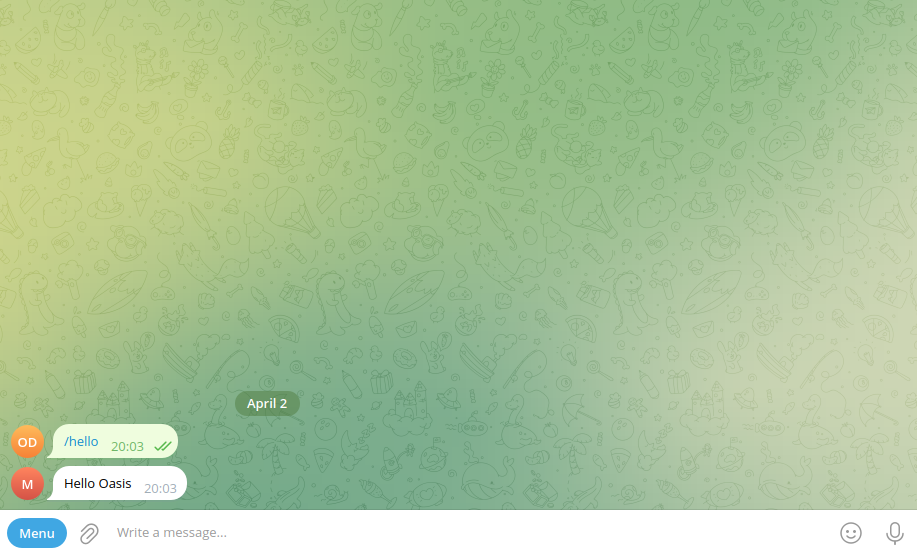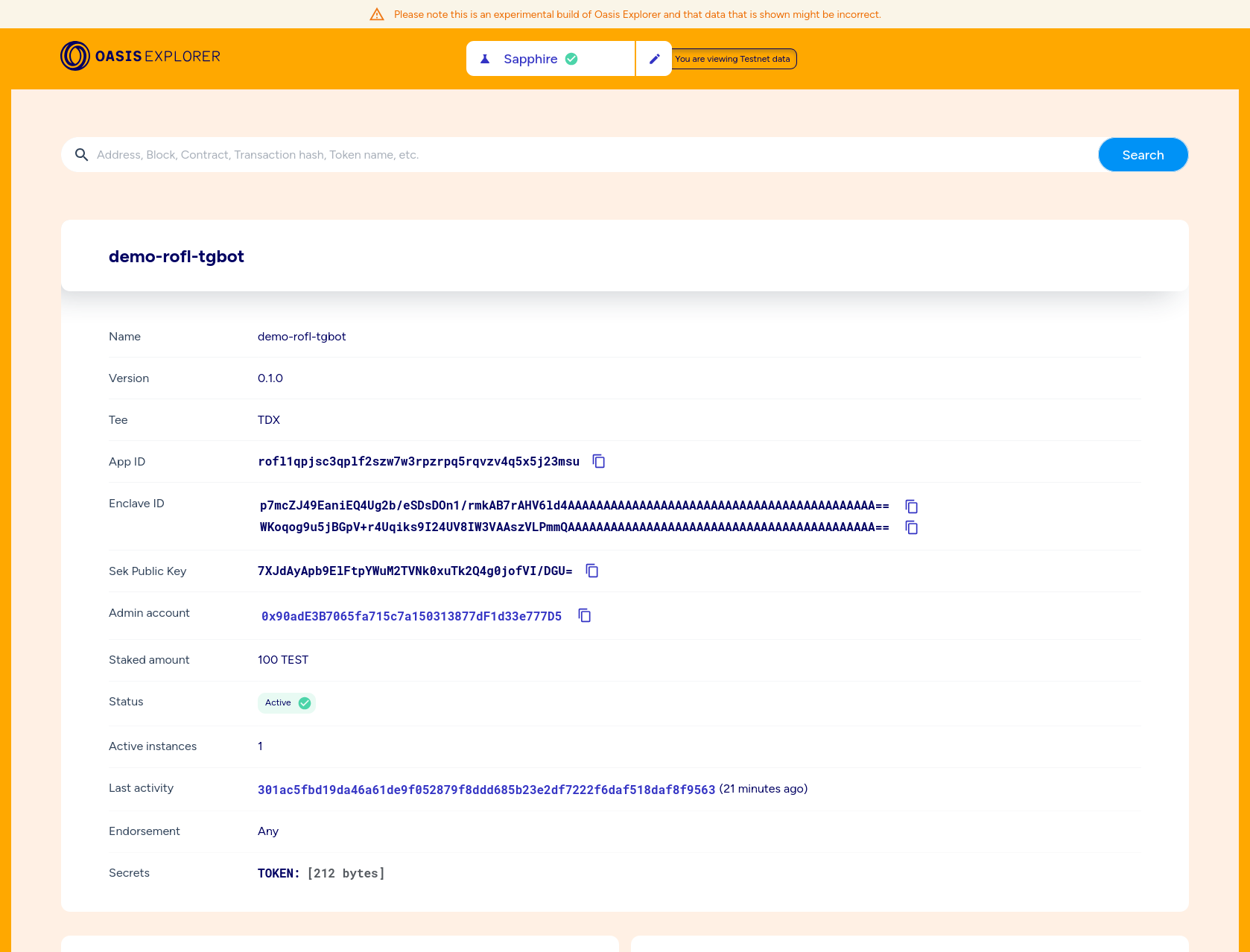Private Telegram Chat Bot
This chapter shows you how to build a simple Telegram bot that will run inside ROFL. Along the way you will meet one of the most powerful ROFL features—how to safely store your bot's Telegram API token inside a built-in ROFL key-store protected by the Trusted Execution Environment and the Oasis blockchain!
Prerequisites
This guide requires:
- a working python (>3.9)
- a working Docker (or Podman),
- Oasis CLI and at least 120 TEST tokens in your wallet (use Oasis Testnet faucet).
Check out the Quickstart Prerequisites section for details.
Init App
First we init the basic directory structure for the app using the Oasis CLI:
oasis rofl init rofl-tgbot
cd rofl-tgbot
Create App
Now create an app on Testnet (requires deposit of 100 TEST):
oasis rofl create --network testnet
After successful creation, the CLI will also output the new identifier, for example:
Created ROFL application: rofl1qqn9xndja7e2pnxhttktmecvwzz0yqwxsquqyxdf
Python Telegram Bot
Use a simple python-telegram-bot wrapper. As a good python citizen create
a new folder for your project. Then, set up a python virtual environment and
properly install the python-telegram-bot dependency:
python -m venv my_env
source my_env/bin/activate
echo python-telegram-bot > requirements.txt
pip install -r requirements.txt
Create a file called bot.py and paste the following bot logic that greets us
back after greeting it with the /hello command:
bot.py
import os
from telegram import Update
from telegram.ext import ApplicationBuilder, CommandHandler, ContextTypes
async def hello(update: Update, context: ContextTypes.DEFAULT_TYPE) -> None:
await update.message.reply_text(f'Hello {update.effective_user.first_name}')
app = ApplicationBuilder().token(os.getenv("TOKEN")).build()
app.add_handler(CommandHandler("hello", hello))
app.run_polling()
Next, generate a Telegram API token for our bot. Search for @BotFather in
your Telegram app and start a chat with the /newbot command.
Then, you'll need to input the name and a username of your bot. Finally,
@BotFather will provide you a token that resembles something like
0123456789:AAGax-vgGmQsRiwf4WIQI4xq8MMf4WaQI5x.
As you may have noticed our bot above will read its Telegram API token from the
TOKEN environment variable. Since we'll use this variable throughout the
tutorial, let's export it for our session and then we can run our bot:
export TOKEN="0123456789:AAGax-vgGmQsRiwf4WIQI4xq8MMf4WaQI5x"
python bot.py
The bot should be up and running now, so you can search for its username in your
Telegram app and send it a /hello message:

Containerize the Bot
Create Dockerfile which copies over the python script to an alpine linux
with installed python:
Dockerfile
FROM python:alpine3.17
WORKDIR /bot
COPY ./bot.py ./requirements.txt /bot
RUN pip install -r requirements.txt
CMD ["python", "bot.py"]
Then add compose.yaml which simply spins up the container image from above:
compose.yaml
services:
python-telegram-bot:
build: .
image: docker.io/YOUR_USERNAME/rofl-tgbot
platform: linux/amd64
environment:
- TOKEN=${TOKEN}
Build ROFL Bundle
To build a ROFL bundle invoke the following:
oasis rofl build
Secrets
Do you recall the TOKEN environment variable we exported above? Now, we will
encrypt it and safely store it on-chain, so that it will be fed to our bot
container once it's started on one of the TEE provider's nodes:
echo -n "$TOKEN" | oasis rofl secret set TOKEN -
To submit this secret and the signatures (enclave IDs) of our .orc bundle components on-chain run:
oasis rofl update
Deploy
Finally, we deploy our ROFL bundle to a Testnet node instance offered by one of the ROFL providers:
oasis rofl deploy
Congratulations, you have just deployed your first app in ROFL! 🎉
Go ahead and test it by sending the /hello message in the Telegram app. You
can also check out your app on the Oasis Explorer:

You can fetch a finished project of this tutorial from GitHub here.